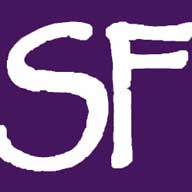 Fuerteventura, with an area of 1.658 square kilometres, and a part of its off shore waters, have been declared in May 2009 by the UNESCO as a Biosphere Reserve. There are about 550 in the entire world, divided over 107 countries. Fuerteventura is one of the largest Biosphere Reserve in Spain and the one with the most extended marine area. This reserve represents one of the world's major geo-paleontological observatories and is home to an outstanding diversity of ecosystems and a wide variety of marine species.
Fuerteventura, with an area of 1.658 square kilometres, and a part of its off shore waters, have been declared in May 2009 by the UNESCO as a Biosphere Reserve. There are about 550 in the entire world, divided over 107 countries. Fuerteventura is one of the largest Biosphere Reserve in Spain and the one with the most extended marine area. This reserve represents one of the world's major geo-paleontological observatories and is home to an outstanding diversity of ecosystems and a wide variety of marine species.
 Due to its proximity to Africa the island offers ecosystems from desert and semi-desert areas to a marine environment. In this marine environment sperm whales and dolphins are the most important marine mammals, besides the turtles which reproduce on the west-coast beaches of Jandía. The West coast of Fuerteventura, with an approximate length of about 100km, is practically virgin area with almost no urban development.
Due to its proximity to Africa the island offers ecosystems from desert and semi-desert areas to a marine environment. In this marine environment sperm whales and dolphins are the most important marine mammals, besides the turtles which reproduce on the west-coast beaches of Jandía. The West coast of Fuerteventura, with an approximate length of about 100km, is practically virgin area with almost no urban development.
To be mentioned as particularly interesting are the Saladar of Jandía, the Riscos de Carnicero and the Palm Grove in the Gran Tarajal valley, besides the Corralejo Dunes, The island of Lobos and the Malpais de la Arena in Villaverde, the latter being the youngest volcano on Fuerteventura (+/- 6000 years).
A Biosphere Reserve has 3 main parts:
- the Core Zone is an area that is strongly protected for the conservation of its biological diversity. Areas are the dunes near Corralejo, the North Western and Western coast, Betancuria, the Jandía-Cofete area, the coastal areas around Gran Tarajal, and the Malpais Chico and Grande near Pozo Negro.
- the Buffer Zone surrounds the Core Zone and provides a space for environmental research, recreation and tourism. Areas are almost all surface that isn't Core Zone and built up areas.
- the Transition Zone is the zone for local communities like farming, fishing, etc.
The basic objectives of a Biosphere Reserve are:
- Conservation of landscapes, ecosystems, species and genetic diversity,
- Local Development that integrates human and economic progress with the conservation of its environment, their culture and the traditions.
- Logistic Assistance: permanent support on education, capacitating, investigation and observation about conservation and sustainable development.
 The Biosphere Reserve has a couple of well-defined domains of attention and each of them have clear objectives. Some worth mentioning are the "Turtle" program to re-introduce turtles on the West coast of Jandia within a period of about 15 years, the "Cetaceans" program to study their behaviour, the "Avifauna" program to study and protect local and migratory birds, the "Fuerteventura & Sea" program to reduce and improve the local fishing industry, the "Starlight" program to develop Fuerteventura into an area with a low level of light pollution so that visitors and residents can enjoy at full the breathtaking views of flashing stars against a pitch-black sky, the "Sustainable Hunting" program to improve hunting with a local dog breed (Podenco) and to use non-contaminating ammunition.
The Biosphere Reserve has a couple of well-defined domains of attention and each of them have clear objectives. Some worth mentioning are the "Turtle" program to re-introduce turtles on the West coast of Jandia within a period of about 15 years, the "Cetaceans" program to study their behaviour, the "Avifauna" program to study and protect local and migratory birds, the "Fuerteventura & Sea" program to reduce and improve the local fishing industry, the "Starlight" program to develop Fuerteventura into an area with a low level of light pollution so that visitors and residents can enjoy at full the breathtaking views of flashing stars against a pitch-black sky, the "Sustainable Hunting" program to improve hunting with a local dog breed (Podenco) and to use non-contaminating ammunition.
If you are interested in discovering one of these protected areas, please consult the local tourism office.
Michel
Source: Cabildo de Fuerteventura.
